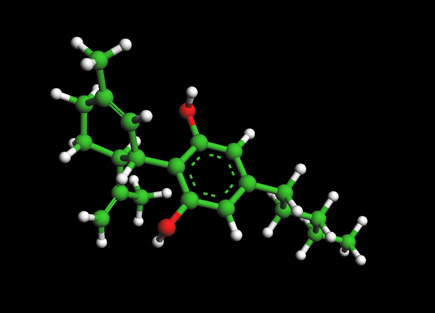Flumadine Molecule-- Anti-Viral Drug for Influenza

The Flumadine Molecule
For 3-D

FlumadineChemical Formula: C12H21N
Four drugs have been approved to fight the Flu: Amantadine (Symmetrel); Oseltamivir (Tamiflu); Rimantadine (Flumadine) ; and Zanamivir (Relenza)
Rimantadine (sold under the trade name Flumadine) is an orally administered antiviral drug used to treat, and in rare cases prevent, Influenzavirus A infection. When taken within one to two days of developing symptoms, rimantadine can shorten the duration and moderate the severity of influenza. It is a derivate of adamantane, like a similar drug amantadine. It was approved by the Food and Drug Administration (FDA) in 1994.
Mechanics
Scientists do not understand why rimantadine works, but believe it inhibits influenza's viral replication, possibly by preventing the uncoating of the virus's protective shells, which are the envelope and capsid. Genetic studies suggest that the virus M2 protein, an ion channel specified by virion M2 gene, plays an important role in the susceptibility of influenza A virus to inhibition by rimantadine. Resistance to rimantadine can occur as a result of an amino acid substitutions at certain locations in the transmembrane region of M2. This prevents binding of the antiviral to the channel.
Drug interactions
Taking acetaminophen (Tylenol) or aspirin while taking rimantadine is known to reduce the body's uptake of rimantadine by approximately 12%.[1] Cimetidine also affects the body's uptake of rimantadine.
Adverse effects
Rimantadine can produce gastrointestinal and central nervous system adverse effects. Studies have shown it produces fewer side effects than other anti-viral influenza treatments. Approximately 6% of patients (compared to 6% of patients taking a placebo) reported side effects.[2] Common side effects include:
- nausea
- upset stomach
- nervouseness
- tiredness
- lightheadedness
- trouble sleeping
- difficulty concentrating
Other Uses
Rimantadine, like its antiviral cousin amantadine, possesses some NMDA antagonistic properties and is used as an antiparkinsonic drug (ie, in the treatment of Parkinson's Disease). However, neither rimantadine nor amantadine are preferred agents for this therapy and are generally reserved for cases of the disease which are less responsive to front-line treatments.
External links
- U.S. FDA press release announcing rimantadine's approval
- U.S. Center for Drug Evaluation and Research rimantadine description
- U.S. NIH rimantadine description
Anti-Viral Drugs
Influenza
- Amantadine-- Symmetrel
- Oseltamivir-- Tamiflu
- Flumadine -- Rimantadine
- Zanamivir -- Relenza
- Peramivir (Rapivab)
- Laninamivir -(Inavir - Japan)
Herpes
Aids
Hepatitis C
- Ribavarin
- Simeprevir (Olysio)
- Harvoni - ledipasvir and sofosbuvir
- Sofosbuvir (Sovaldi)
Anti-Cancer Drugs
The Cannabidiol Molecule
Cannabidiol (CBD is the major non-psychoactive component of Cannabis and is being looked at by major drug and consumer companies for various medical and social uses.